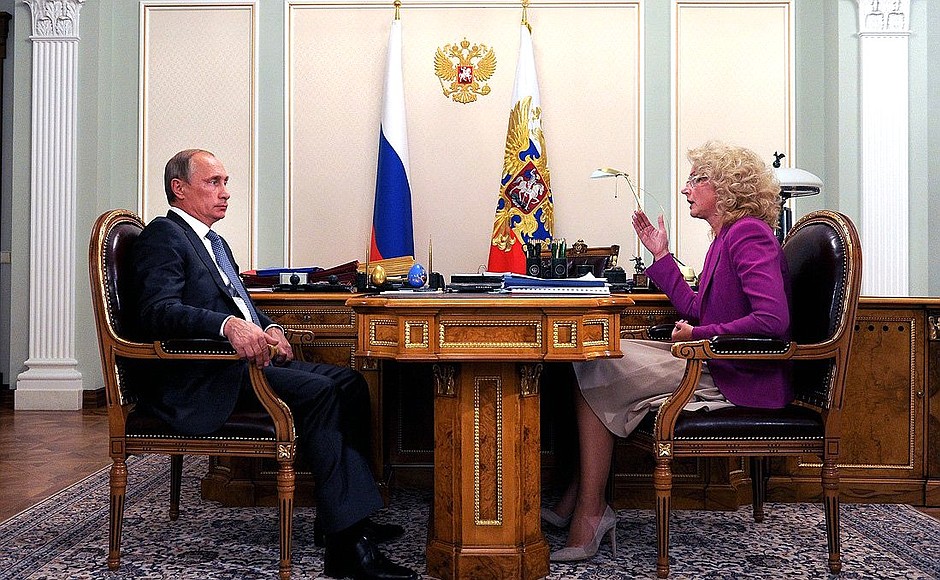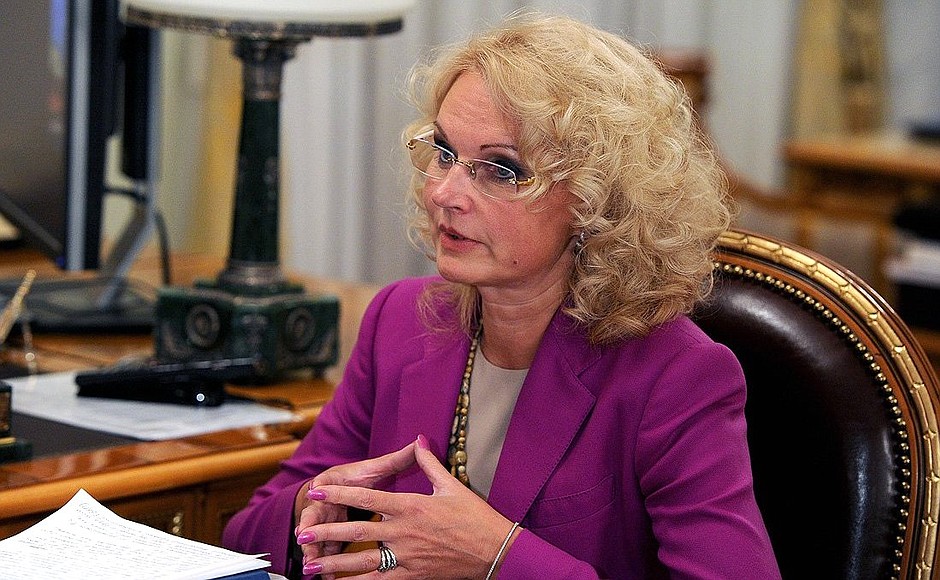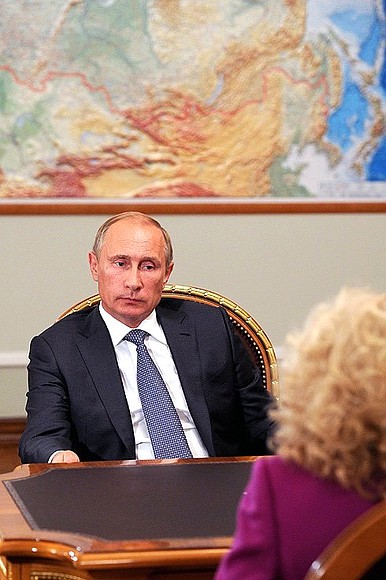President of Russia Vladimir Putin: Ms Golikova, let us consider how efficiently the state programmes are being implemented. I believe you have been involved in developing these programmes, and even launched one of them. How are they working?
Accounts Chamber Chairperson Tatyana Golikova: I would like to begin by saying that we have implemented quite a few compliance measures pursuant to your instructions after the State Council meeting on the conformity of the state programmes adopted by the Government to the national strategic targets.
The Government established that there were 42 programmes to approve. So far, they have adopted 40 of them. Among those pending approval is the state programme to develop the pension system. The resources involved in the 40 approved programmes account for 59 percent of the federal budget spending.
The verification of the programmes’ conformity to national strategic development targets is clearly not an easy task, because the key strategic targets are the ones set out in the Presidential Executive Orders of May 7, 2012. Unfortunately, a number of indicators in some other strategic documents, like the Concept of Social and Economic Development until 2020 or the Demographic Policy Concept, are somewhat outdated and need to be adjusted in line with the new economic challenges. The same is true of such a strategic Government document as the Policy Priorities of the Government to 2018.
Having chosen the Presidential Executive Orders of May 2012 as our guideline, we assessed how well the programmes reflect the targets of the Presidential Executive Orders, because the programmes are in fact their main implementation mechanism.
Here is what we have found. Speaking of the Executive Orders, the key targets and measures they contain are clear both to the public and to the business community. Meanwhile, the mechanisms for achieving these targets and implementing the measures, as laid out in the state programmes, are not always clear to either the population or businesses. The main problem is assessing how these targets are being achieved, what the prospects are and what is the responsibility of the federal agencies implementing these programmes.
The second thing we discovered is that some of the targets set out in the Presidential Executive Orders are not reflected in the programmes. Some target deadlines have not been met in specific regions.
Let us refer to specific documents. Thus, the measures set out in the Strategy for the Development of Medical Science are not reflected in the corresponding programmes. As for the indicators that have not been reached, this mainly concerns economy class housing construction and providing residents of dilapidated housing with proper accommodation in line with specific standards.
However, the most complicated issue, I believe, is balancing the general economic figures, such as the overall number of high-productivity jobs, labour productivity, the share of high technology industries and investment in the GDP. This is a complex target that cannot be found in any of the programmes. Therefore, it is hard to say how we will be assessing it. For example, the labour productivity target is only reflected in 11 programmes of the total 40.
It would be wrong to say that the Government is not doing anything about this. Obviously, the Government is currently adjusting the programmes. This is a more advanced stage of adjustment, if we compare it to last year or earlier this year. It is obvious that the Government is now set on taking stock of all the targets listed in the Presidential Executive Orders and on making sure that the programmes correspond to the budget targets for 2015–2017.
However, I believe (and this is what our compliance measures have revealed) that at this point we need to focus on the priorities that are especially significant in view of the current developments in the economy, in particular in view of the sectoral sanctions that we need to operate under. Therefore, such programmes as the development of agriculture, industry, pharmaceutical and medical equipment production, innovation economy, the fishing industry – these programmes need to be restructured to meet the challenges of the current economic situation. We need to establish long-term mechanisms and rules. Otherwise, if we only operate within a single fiscal year, Russia will not benefit in any way in terms of replacing imported goods.
In this context, I believe we should focus on regional programmes, because the infrastructure is developed mainly in the regions. Unfortunately – again, as our monitoring activities have shown – the programmes in the Far East, North Caucasus and Kaliningrad do not meet the medium- and long-term regional development targets. Thus, as of July 1, 2014, cost-wise, the Far East programme has only been implemented by 1.6 percent. I do not think this is acceptable, considering the current conditions, when we have sufficient funding to meet the ambitious goals set in that programme and in your Executive Orders.
We have now moved to a stage in our work where we go into greater detail and are working on the budget. I believe we will continue to assess the state programmes’ efficiency at the next stage of economic development.
Vladimir Putin: I would like to see a detailed analysis from you, so we can adjust our joint efforts.
Tatyana Golikova: I have it here for you.
Vladimir Putin: Good.
<…>



